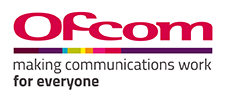Online transactions have become a part and parcel of our life. People share sensitive personal information, such as credit card, login details, etc online. The user, while sharing such details on the net, should not feel threatened that his details will be misused. For this reason, domain security has become a necessity. One such method of ensuring domain security is SSL.
SSL or Safe Security Layer is a security technology, which establishes an encrypted link between a web server and a browser. This ensures the safety of all data between the web servers and browsers.
Browsers can interact with secured web servers only through the SSL protocol. For this, the browser and the server both require Safe Security Layer Certificate. This certificate ensures a secure connection between the two.
Steps to get an SSL Certificate
The user who needs the certificate creates a Certificate Signing Request (CSR) on his server and sends it to Certificate Authority (CA). The CA should be a trusted one like DigiCert, etc.
Once the request is sent, public and private keys are generated on the server.
CSR data file sent contains the public key.
CA uses CSR data to create a data structure which matches the private key. However, CA cannot see the actual private key.
An SSL Certificate is received by the user.
The user can then install the certificate on his server.
An intermediate certificate is also installed to authenticate the credibility of this certificate.
Types of Safe Security Layer Certificates
Domain Validated
This is a private certificate which is ideally used when secure communication is carried out between the customer and the website. It is directly linked to the domain, so the customers know that they are using the right website.
Company Validated
In this type of certification, additional documentation is required for certifying the Company's identity. A Company validated certificate generates more trust in the user.
Extended Validation
It provides security against fraud by carrying out additional checks and validations. The 'https' on address bar is exclusive to this certificate. 's' stands for secure.
Wild Card
This facilitates encryption on unlimited domains using just one certificate. However, it requires that all the subdomains have the same second-level domain name.
Multi Domain
This type of certificate allows a maximum of 210 domains. It also permits mixing of domain names.
The user can select any of these certificates depending on his requirement. Various SSL certificates indicate security in different ways. When a user visits a website which has an SSL Certificate installed, a padlock or a green bar appears on the browser indicating security.
Source by Chandni Naresh Wadhwani






